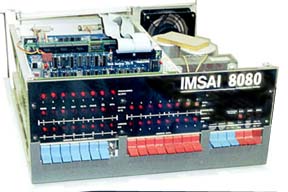Main Storage
Assembly language does match the problem when the problem is the operation of the computer system. Assembly language is used for operating systems, compilers, communications, low-level graphics, and other programs where the architecture of the processor must be visible. Often with these program the crucial parts are written in assembly and the rest in a high level language (usually C). The most common use of assembly language is in programming embedded systems. Here a processor chip is part of a machine built for a specific purpose. Examples are microwave ovens, communication satellites, DVD players, robots, automobile fuel systems, "smart" bombs, and game consoles. MIPS chips are commonly used in these (and for this reason more MIPS chips are made each year than any other processor).

|
| A Beautiful Computer |
|---|
Now let us move on to the memory of a computer system. Eight bits make up a byte. A bit is a single on/off value. Early computers had rows of toggle switches which were used to set the values of bits in main memory. You could program these computers by entering the bits of each machine instruction from the front panel switches. A light above each switch showed whether it was on or off (1 or 0). Modern computers have more convenient methods for moving bit patterns into memory.
The bytes that make up the
machine instructions of a program are stored in
main memory
and fetched into the processor as needed.
Data is also kept in main memory.
Keeping both data and instructions in main memory
is one of the characteristics of a
In the MIPS, as in most computers, each byte of main memory has an address. An address is an integer that uniquely identifies the byte. The addresses run from 0 up to about four billion. However, on the MIPS, user programs and data (such as you will write) are restricted to the first two billion addresses.